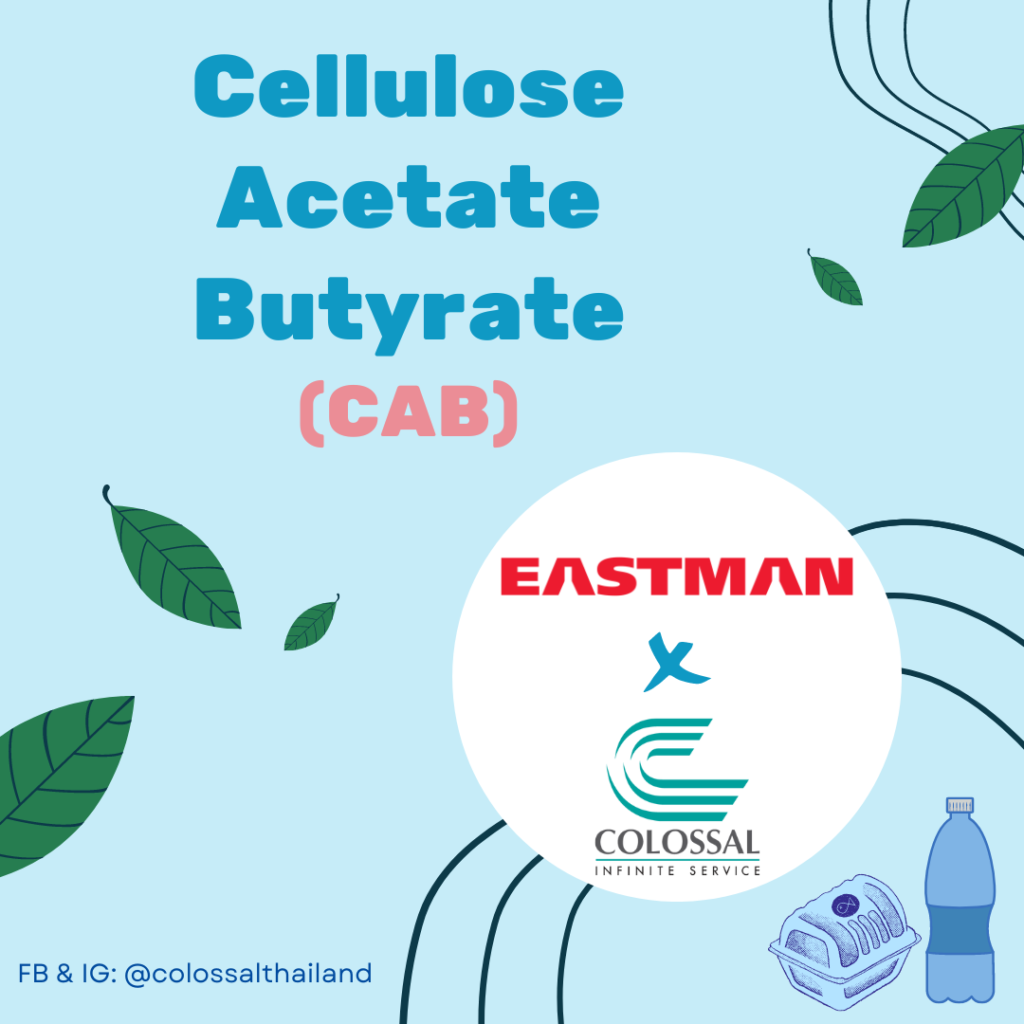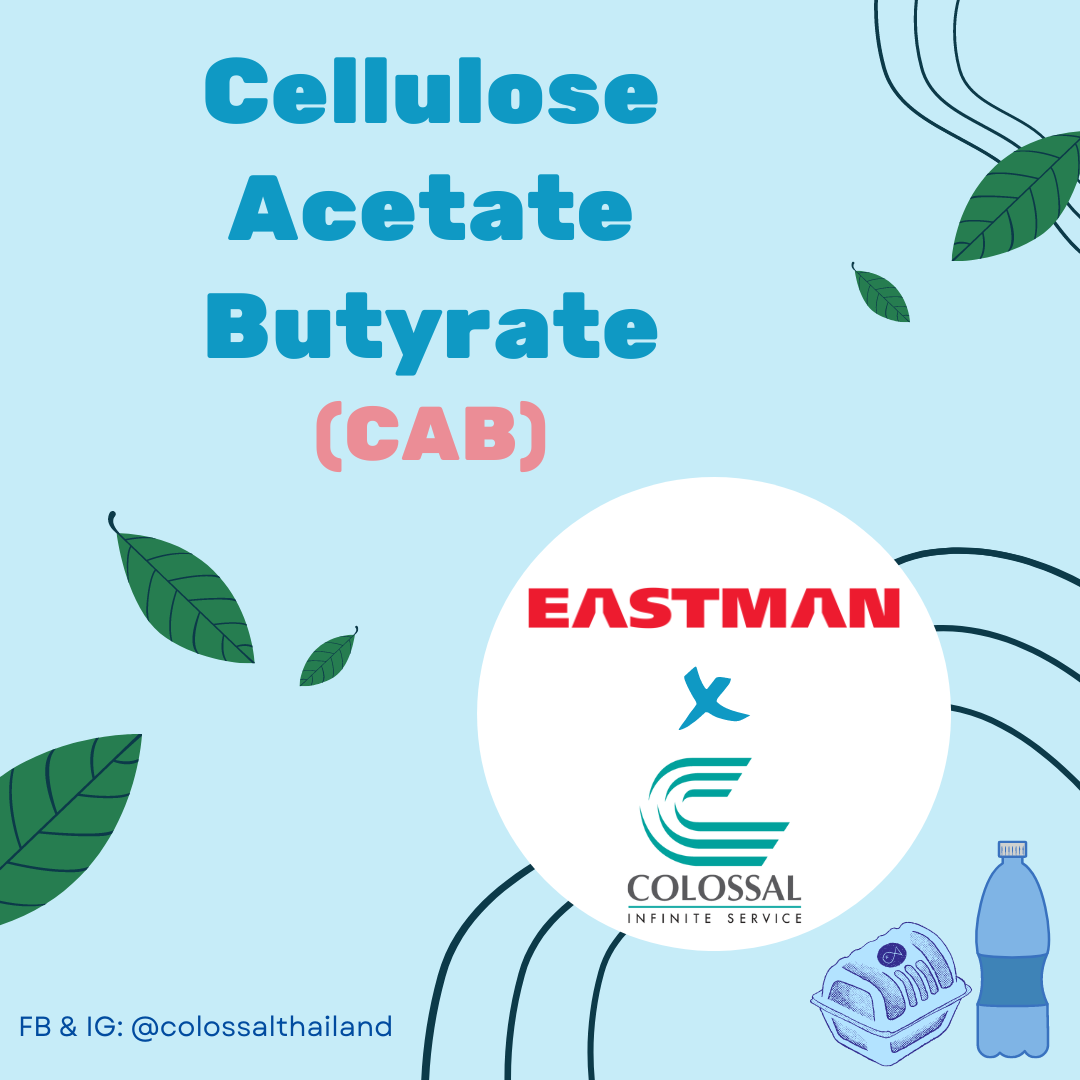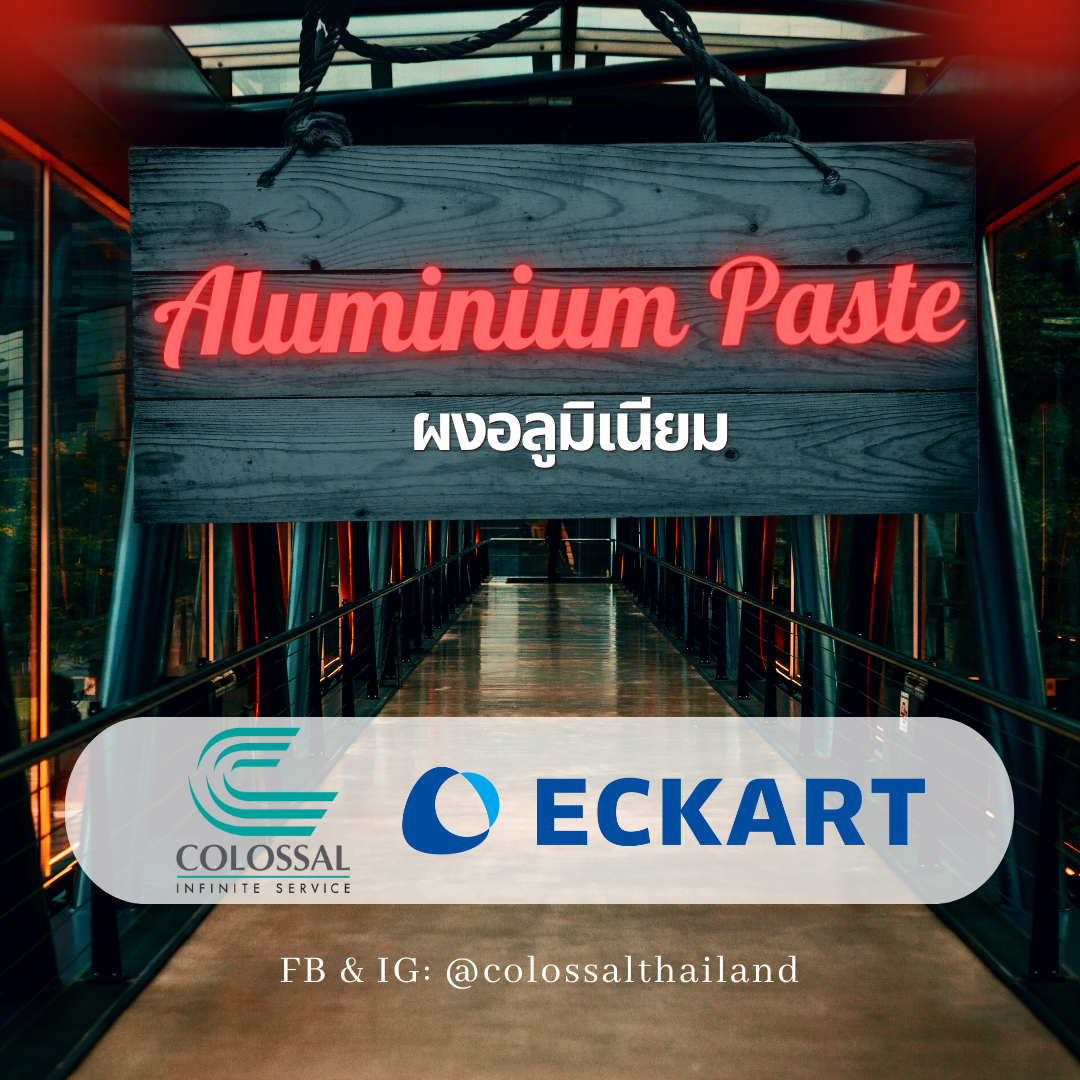Cellulose Acetate Butyrate (CAB)
Cellulose Acetate Butyrate (CAB)
Paints & Graphic Arts, Plastics, Rubber

Cellulose Acetate Butyrate (CAB) เป็นพอลิเมอร์เทอร์โมพลาสติกชนิดหนึ่งที่เป็นอนุพันธ์ของเซลลูโลสซึ่งเป็นวัตถุดิบธรรมชาติที่พบในผนังเซลล์ของพืช CAB เป็นเซลลูโลสเอสเตอร์ซึ่งเกิดจากการปรับโครงสร้างเซลลูโลสด้วยกรดอะซีติกและกรดกรดบิวทิริก คุณสมบัติที่เป็นเอกลักษณ์ของ CAB เช่น ความโปร่งใส ความทนทานต่อแรงกระแทก และการป้องกันการเปลี่ยนเป็นสีเหลืองของพื้นผิววัสดุ
CAB ใช้งานอย่างแพร่หลายในการเคลือบและสร้างฟิล์มเนื่องจากความโปร่งใสและคุณสมบัติให้ความเงาสูง นอกจากนี้ยังใช้ในอุตสาหกรรมที่ต้องการความแข็งแรง ความยืดหยุ่น และความทนทาน เช่น ชิ้นส่วนในยานยนต์ สินค้าบริโภค และวัสดุบรรจุภัณฑ์ต่างๆ CAB มีคุณสมบัติการยึดเกาะที่ดี ทำให้เหมาะสำหรับใช้เป็นสารเคลือบบนพื้นผิวต่าง ๆ เช่น เหล็ก พลาสติก และแก้ว
เนื่องจากมีความยืดหยุ่นสูง สามารถขึ้นรูปได้ดี CAB จึงเป็นที่นิยมนำไปใช้ในอุตสาหกรรมพลาสติก ไม่ว่าจะด้วยวิธีการฉีดขึ้นรูป หรือการเป่าขึ้นรูป นอกจากนี้ยังมีความสามารถในการละลายในสารละลายต่างๆหลายชนิด ทำให้ผู้ผลิตสามารถใช้งานได้หลากหลายตามสูตรหรือคุณสมบัติที่ต้องการในผลิตภัณฑ์ต่างๆได้อย่างง่ายดาย
นอกจากคุณสมบัติทางกายภาพทั่วๆไปแล้ว CAB ยังมีความสามารถต้านทานทางเคมีที่ดี ซึ่งทำให้เหมาะสำหรับใช้ในสภาวะแวดล้อมที่เป็นกรดหรือเป็นด่างสูง หรือสภาวะที่ต้องระมัดระวังต่อแสงและรังสี UV เนื่องจากมีคุณสมบัติทนทานต่อความร้อนสูง
Cellulose Acetate Butyrate (CAB) is a thermoplastic polymer that is a derivative of cellulose, a natural polymer found in plant cell walls. It is a type of cellulose ester, which is formed by modifying cellulose with acetic acid and butyric acid. It is commonly used in various applications due to its unique properties, such as its excellent clarity, good impact resistance, and high resistance to yellowing.
CAB is often used in coatings and films due to its transparency and high gloss. It is also used in applications where toughness, flexibility, and durability are required, such as in automotive parts, consumer goods, and packaging materials. It is known for its good adhesion properties, making it suitable for use as a coating on a wide range of substrates, including metal, plastic, and glass.
One of the main advantages of CAB is its ability to be easily molded and shaped using conventional plastic processing techniques, such as injection molding, extrusion, and blow molding. CAB can also be dissolved in a wide range of solvents, allowing for easy formulation of coatings and films with desired properties.
In addition to its physical properties, CAB is also known for its chemical resistance, which makes it suitable for use in harsh environments where exposure to chemicals or UV radiation is a concern. CAB is also relatively stable at elevated temperatures, making it suitable for high-temperature applications.
#CelluloseAcetateButyrate #CAB #Plastic #ColossalInternational #chemistry #EASTMAN
- Paints & Graphic Arts
- Plastic
- Rubber
Address
731/38-43 Ratchadapisek Rd. Bangpongpang Yannawa Bangkok 10120
Office Hours
Monday–Friday: 8:00AM–5:00PM






